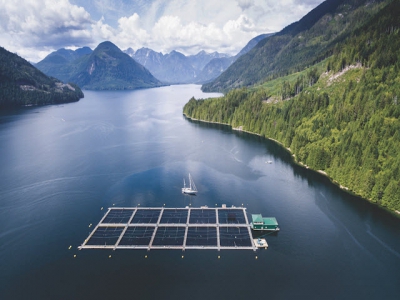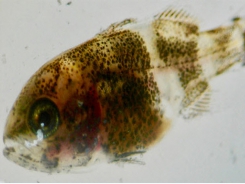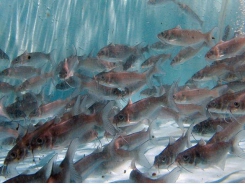Salmon growth anomalies explained

A new study involving the University of Stirling has shed fresh light on the link between the life history of fish, their behaviour and their physical characteristics such as growth rates.
The research identified an association between differing growth patterns and body sizes in Atlantic salmon and their behaviour and other developmental characteristics, such as stress responsiveness.
Dr Sonia Rey Planellas, of Stirling’s Institute of Aquaculture, collaborated with colleagues in Norway and the Netherlands on the project.
“One of the main challenges faced by the salmon industry is to understand why individuals within fish populations exhibit significantly different growth patterns and body sizes,” Dr Rey Planellas said. “This is important because a significant percentage of the animals do not smoltify – meaning many are lost in production and are potentially living under stressful conditions.
“Ideally, the fish would behave in the same way at the same time – but it is not well understood why this does not happen. Our research sheds new light on this challenge – showing how different growth patterns have different, associated behavioural traits.”
The research, led by Professor Børge Damsgård, of the University Centre in Svalbard, was conducted in Tromsø, where the fish were held and sampled. Analysis of the data was carried out across a number of partner research institutions and organisations, including the Institute of Aquaculture; the Norwegian University of Life Sciences (Oslo); Radboud University (Nijmegen); Uni Research (Bergen); University of Agder (Kristiansand); Norwegian Institute of Water Research (Oslo); and Nofima (Tromsø).
The team found that fast-growing Atlantic salmon reach smoltification – where juvenile fish adapt from living in fresh water to seawater – sooner than slow-growing individuals. In addition, the fast-growing fish exhibited proactive, bold characteristics compared to the other group, including active hypoxia avoidance – where the fish attempt to escape low-oxygen conditions – and low stress responsiveness.
Professor Damsgård explained: “The hypoxia responses are proxies for a basic, individual behavioural response – which is linked to a stress response – and both traits are linked to the pace-of-life.
“It is no surprise that faster-growing fish smoltify earlier – but it is new that such individual differences exist within a population with exactly the same background and conditions.”
Dr Rey added: “This research helps us to understand the different lifecycle strategies and will lead to improvements in the management and welfare of the fish too.”
The study was part of the COPEWELL project, funded by the European Union, which included an Institute of Aquaculture-led sub-project on stress coping styles in salmon, seabass and sea bream.
The research, Proactive avoidance behaviour and pace-of-life syndrome in Atlantic salmon, is published in Royal Society Open Science.
Có thể bạn quan tâm
Phần mềm

Phối trộn thức ăn chăn nuôi

Pha dung dịch thủy canh

Định mức cho tôm ăn

Phối trộn phân bón NPK

Xác định tỷ lệ tôm sống

Chuyển đổi đơn vị phân bón

Xác định công suất sục khí

Chuyển đổi đơn vị tôm

Tính diện tích nhà kính

Tính thể tích ao hồ




 Egypt Skretting looks to maximize tilapia farm productivity
Egypt Skretting looks to maximize tilapia farm productivity  PRV doesn't pose risk to wild salmon
PRV doesn't pose risk to wild salmon